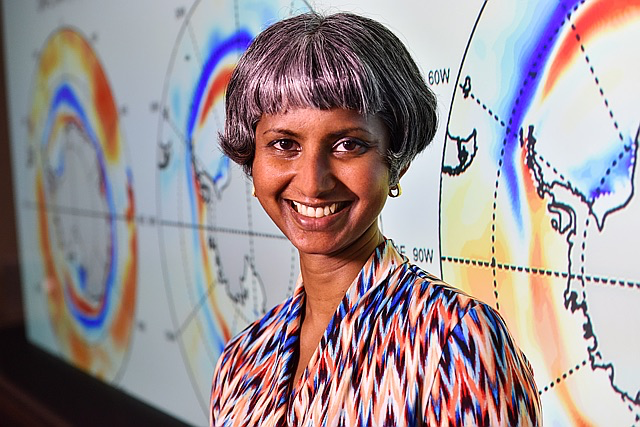A Source–Receptor Perspective on the Polar Hydrologic Cycle: Sources, Seasonality, and Arctic–Antarctic Parity in the Hydrologic Cycle Response to CO2 Doubling
Published in Journal of Climate, 2017
Recommended citation: Singh HKA, Bitz CM, Donohoe A, Rasch PJ. (2017). "A Source–Receptor Perspective on the Polar Hydrologic Cycle: Sources, Seasonality, and Arctic–Antarctic Parity in the Hydrologic Cycle Response to CO2 Doubling." Journal of Climate. 30(24): pp 9999-10017.
Abstract: Numerical water tracers implemented in a global climate model are used to study how polar hydroclimate responds to CO2-induced warming from a source–receptor perspective. Although remote moisture sources contribute substantially more to polar precipitation year-round in the mean state, an increase in locally sourced moisture is crucial to the winter season polar precipitation response to greenhouse gas forcing. In general, the polar hydroclimate response to CO2-induced warming is strongly seasonal: over both the Arctic and Antarctic, locally sourced moisture constitutes a larger fraction of the precipitation in winter, while remote sources become even more dominant in summer. Increased local evaporation in fall and winter is coincident with sea ice retreat, which greatly augments local moisture sources in these seasons. In summer, however, larger contributions from more remote moisture source regions are consistent with an increase in moisture residence times and a longer moisture transport length scale, which produces a robust hydrologic cycle response to CO2-induced warming globally. The critical role of locally sourced moisture in the hy- drologic cycle response of both the Arctic and Antarctic is distinct from controlling factors elsewhere on the globe; for this reason, great care should be taken in interpreting polar isotopic proxy records from climate states unlike the present.
